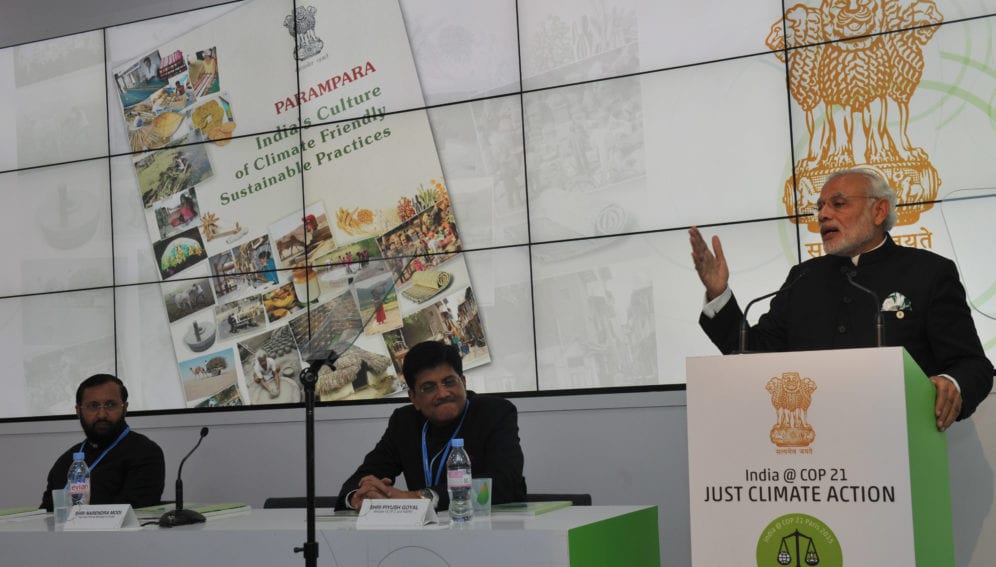By: Ashutosh Senger
Send to a friend
The details you provide on this page will not be used to send unsolicited email, and will not be sold to a 3rd party. See privacy policy.
The Paris Agreement will compel governments and industry to adopt sustainable ways to execute their business, says Ashutosh Senger.
The agreement, produced at the end of COP21, carries legal status. Climate negotiations behind the agreement, consisted of layered legal processes presented in a technical language. The mandate behind the Paris talks called for an outcome with legal force, which by interpretation means an agreement that constitutes a treaty under the Vienna Convention on the Law of Treaties. It will enter into force after at least 55 Parties to the Convention, accounting in total for at least an estimated 55 per cent of the total global greenhouse gas emissions, have deposited their instruments of ratification, acceptance, approval or accession.
The agreement is a reflection of the political will as certain elements are legally binding and some not. These adjustments could be to avoid potential risks of non-ratification of the agreement. From a legal perspective, it’s an international agreement that will have huge implications on the planet and its people. It can be argued that the Paris Agreement will provide the roadmap for the future climate change action.
COP21 is different
COP21 was ambitious enough to hold the global temperature rise to “well below two degrees Celsius” above pre-industrial levels and to pursue efforts to limit the temperature rise to 1.5 degrees Celsius. In addition, the agreement embodies the principle of ‘progression’, which by interpretation means that the parties cannot go back on submitted targets. The agreement will be implemented to reflect equity and the principle of common but differentiated responsibilities and respective capabilities, in the light of different national circumstances.
Public international law does not drive nations to go beyond what they are already doing, as nations resist committing themselves to ‘legally binding’ international obligations unless they are certain in advance of complying. This gets reflected in the Paris Agreement, which notices the nationally determined contributions (NDCs) pledge by 185 countries covering 94 per cent of the global emissions and 97 per cent of global populations that were submitted ahead of the Paris conference.
These contributions are essential to reduce emissions and achieve the purpose of the Paris Agreement. These NDCs are a shift from the top-down approach set out in the Kyoto Protocol as they allow individual countries to pursue strategies and solutions that they judge to best accommodate their national interests and priorities. From recognising nationally determined contributions, it shows that the intention of the Paris Agreement is about codifying existing practices of sovereign states than creating new ones.Each party has been asked to strengthen its successive NDCs, which means that new market-based mechanisms and opportunities borne out of the NDCs shall be at the core of performance demanded by the agreement.
Opportunity
COP21 may result in new market dynamics. Post the agreement, shares in coal firms plunged. Peabody, the world’s largest coal firm, saw stock values drop 12.6 per cent while the renewable energy companies experienced a positive rise. COP21 can be said to bring opportunity in every difficulty that accompanies it. NDCs are an integral part of the core agreement as they are housed inside and are part of the package that the states are to ratify.
India’s NDCs are made with the intent to reduce its emission intensity by 33—35 per cent by 2030 (over 2005 level) — this implies that the emissions would come down in relation to total energy consumption. As part of this target, India has declared that it wants to achieve 100 gigawatts of solar capacity addition by the year 2022. The agreement says that developed countries ‘shall’ provide financial resources to assist developing countries with respect to both mitigation and adaptation in continuation of their existing obligations under the Convention.
This suggests that the Indian market may hope to see investments in the green sector including in renewable energy sector, from 2020 onwards. Private sector investments in low carbon development are increasing, the concept of green growth is being talked about and many more climate friendly solutions can be expected as a result of the agreement. The COP21 agreement is both, an inspiration and an opportunity.
Ashutosh Senger is a Research Associate at The Energy and Resources Institute (TERI), New Delhi. The views expressed herein are solely his.














